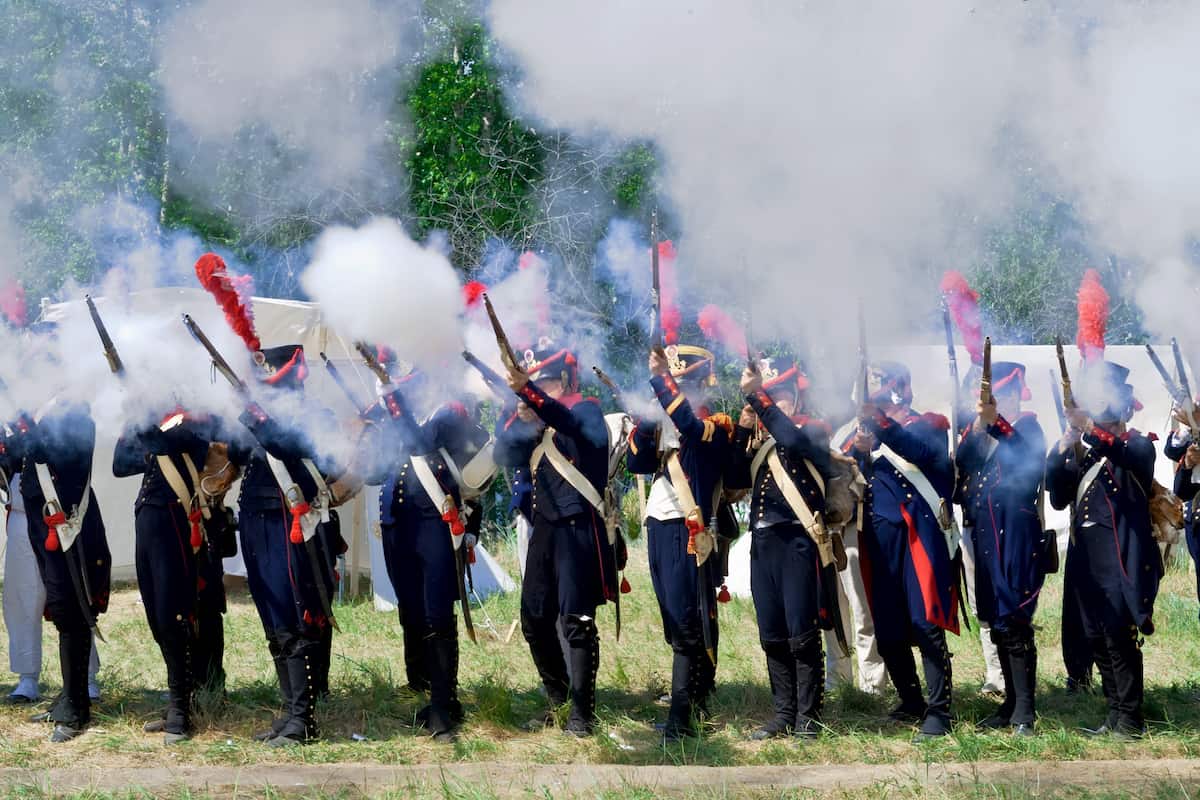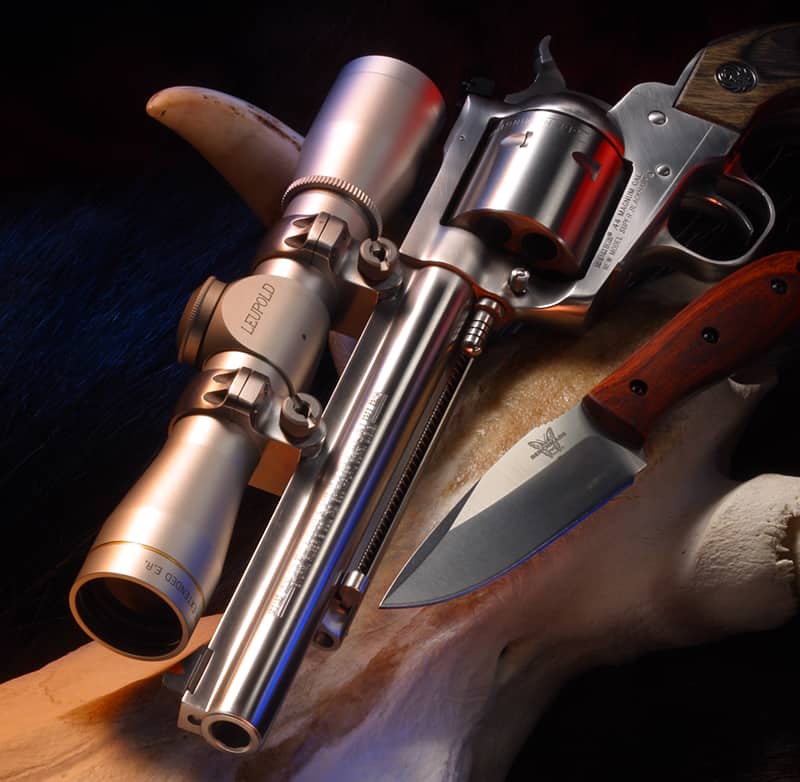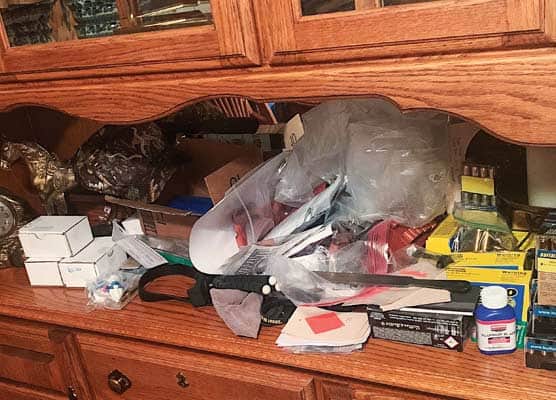210th Anniversary Of
The War Of 1812
Little Known Facts About Our Least Known War
1812: Britain was nearly bankrupt. A decade of Napoleonic wars still raged. Luddite saboteurs destroyed British mills and factories. Food riots, housing riots, civil rights riots exploded almost daily. Thomas Paine’s The Rights of Man fueled the flames of revolt against monarchial rule. King George III went loony-tunes and got stuffed into the Royal Rubber Room. Prime Minister Spencer Perceval was murdered—in Parliament!
In this issue, you’ll find Big Cheese Editor Jeff John’s feature on the 1803 Harper’s Ferry rifle and the role it played in a decisive sea battle of the War of 1812. I thought I’d chip in about three little known aspects of what is perhaps our nation’s least known war….
Most British historians agree that 1812 was the worst year in their country’s history, even more destructive than the Black Plague of 1349. It comprised 12 months of riots, revolts, crime and food shortages unequalled before or since. In fact, 1812 was less than an hour old when crowds celebrating the New Year were attacked by huge criminal gangs committing unchecked murders and robberies.
Following America’s lead, rebellion against hereditary authority was flaring up everywhere. Possession of a copy of Paine’s Rights of Man was a crime, and prima facie evidence of treason. Men were hung for it, but paupers pooled their pennies to purchase copies. Public officials, including many magistrates, were assassinated.
Desertion was rampant in His Majesty’s army and navy. America traded with both England and France, these factors combining to prompt a British blockade of US ports and impressment of seamen from American vessels. Some seamen were indeed British deserters, but most were American citizens. Making matters worse, Britain had invested so much political capital in painting American colonists as worthless rabble during the Revolution, and then being soundly beaten by them, that certain elements in the British hierarchy yearned to give that “rabble” a comeuppance. The last thing in the world a strained and failing Britain needed was another war with the US, but in their festering frustration and desperation, they brought it on themselves.
The Brits scored several early victories and succeeded in burning Washington, but their exhilaration was short lived. The “colonial rabble” was aroused…
A Whuppin’ With A Hickory Stick
When British invasion forces threatened the Gulf Coast and the vital port of New Orleans, President Madison sent the right man for the job: Andrew “Old Hickory” Jackson. Tough as the wood he was nicknamed for, Andy also had an old score to settle with the redcoats.
Jackson’s Scots-Irish parents fled from English oppression in Ireland in 1765, settling in the wild Waxhaws region along the border of North and South Carolina. His father was killed in an accident only 2 years later at age 29, 3 weeks before Andrew was born. His two older brothers were just 3 and 4 years old. Times were hard, and the boys grew up lean—and fast.
When the Revolutionary War broke out, 13-year-old Andrew joined the militia as a courier. His eldest brother Hugh died at the battle of Stono Ferry, and Andy and his brother Robert were captured by the British. Both almost starved to death as prisoners of war. An English officer, a Major Coffin, apparently tried to turn Andy into his personal servant. When Andrew angrily refused to clean the major’s boots, Coffin slashed him on the head and left hand with his saber. The scars and the memories were permanent.
Andrew and Robert both got smallpox. Robert died. Andy’s mother volunteered to treat American cholera victims on prisoner ships in Charleston harbor. She contracted the disease and died. Andrew was an orphan at 14, his family wiped out, directly or indirectly, by the British.
Jackson distinguished himself not only as a fierce fighter on the frontier, but as a man who could forge alliances between disparate and sometimes mutually hostile forces, leading them against common enemies. He was perhaps the only American commander who could have defended New Orleans.
Jackson’s “army” consisted of a small number of regular troops bolstered by freed blacks, stranded seamen, Choctaw Indians and a mob of pirates commanded by the notorious Jean Lafitte. Together they fended off the Brits in several small engagements, buying time for Jackson’s “ace in the hole” to arrive: 2,300 Kentucky riflemen. One got there 3 hours before the others.
“I never in my life seen a Kentuckian without a gun, a pack of cards and a jug of whiskey.”—Andrew Jackson
Michael Severs had run barefoot to New Orleans from Kentucky—to win a bet with another militiaman. They were all mounted on horses. Already a frontier legend ranking with Daniel Boone and James Harrod, his wilderness skills and accuracy with a long rifle were the makings of myth, but backed up by witnesses. Many more would witness them in the battle for New Orleans.
As the engagement developed, General Edward Pakenham, commander of British forces, perceived the weak point to be the American left, occupied by the Tennessee and Kentucky militias. Perhaps this was based on the ragged buckskins and homespun garments of the rabble. If so, more attention should have been paid to the condition of their rifles before ordering a frontal attack on them. The redcoats were decimated.
Major James Hunt of Franklin, Ky., wrote in his diary that he watched through his spyglass as Mike Severs, with two companions loading for him, rapidly fired 26 shots. Hunt saw 26 redcoats fall. As the British attack faltered, Hunt saw General Pakenham, surrounded by staff officers, ride up to about 200 yards away, safely out of accurate musket range. Hunt asked Severs if he could hit a man at that distance. Severs replied he could, for a gallon of good whiskey for himself, a half barrel for his friends, and five dollars cash money, not paper. Hunt readily agreed.
Severs laid five loaded rifles across a cotton bale, tested the wind with a wet finger, and commenced fire. Through his spyglass, Hunt saw General Pakenham jerk violently and fall backward from his horse. He died minutes later and the battle was over. The British ceded the field and withdrew. They had lost 291 killed and 1,262 wounded. American losses were 13 dead and 39 wounded. Unknown to both sides, the Treaty of Ghent had ended the war weeks before.
Mike Severs took his winnings and ran back to Kentucky, beating his comrades home to Muhlenburg County. He declined all honors and when he died in 1850, Mike was buried in an unmarked grave.
Few riflemen have known Severs’ name—and now, a few more do.
Connor OUT




